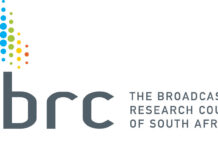South Africa’s business rescue legislation offers companies a lifeline when it comes to defaulting creditors, but they need to understand how the process works to reap the maximum benefit, says Debtsource CEO Frank Knight.
“The success rate of business rescue cases is slowly rising, and now exceeds 30%, although the official statistic from the Companies and Intellectual Property Commission (CIPC) tops 50 percent. It is a relatively speedy process, taking on average 12 to 13 months to complete, and the voting power of concurrent creditors rank equally with secured creditors in the business rescue process,” he notes. “All of these make a strong case for creditors to support a viable business rescue process, and we are likely to see more companies getting into financial trouble in today’s difficult economy.”
Business rescue is a court-mandated process in which a business rescue practitioner is appointed to facilitate the rehabilitation of a company in financial distress. Its goal is to enable the company to return to solvency and continue to trade.
A company that undergoes a successful business rescue will be in a position to pay its creditors eventually whereas, in a liquidation, unsecured creditors are likely to receive a very small proportion of what they are owed, Knight says.
“Business rescue can work, thus saving creditors from losing their money when a debtor risks defaulting, but they would do well to maximise the chances of the process succeeding,” he argues. “One of the key reasons that business rescues fail is that the affected company enters the process too late. One successful business rescue practitioner says that, in his experience, the longer the business rescue process is delayed, the longer it will take to complete. Affected parties, and these include employees (or trade unions representing them), directors, shareholders and especially creditors, can petition the court to initiate business rescue. The process is expensive, but it could be worth it if the debt is sufficiently large, or where the debts are pooled and costs shared”
In the event that a company does go into business rescue, it is vital that the creditors attend the meetings, especially the first one and ideally with an expert advisor. If creditors fail to attend, they could find that they are prejudiced in the subsequent process.
It is also important to understand that once the business rescue is underway, creditors realise that their debts are frozen until such time as the process is complete—they should not waste money on trying to enforce legal claims. If their debts are secured, they must enter into negotiations with the business rescue practitioner to ensure that the secured assets are protected during the business rescue process.
As a matter of policy, Knight therefore suggests that companies regularly reassess the ability of their debtors to discharge their obligations, and to ensure they have proper credit agreements with them. When it becomes clear that debtors are in financial distress and their ability to pay is compromised, creditors should have the capacity and expertise to initiate business rescue in good time to maximise the chance of recovery.
“Finally, consult your broker about trade credit insurance to give you further protection and don’t be afraid to ask for help from credit experts,” he concludes.




















































































